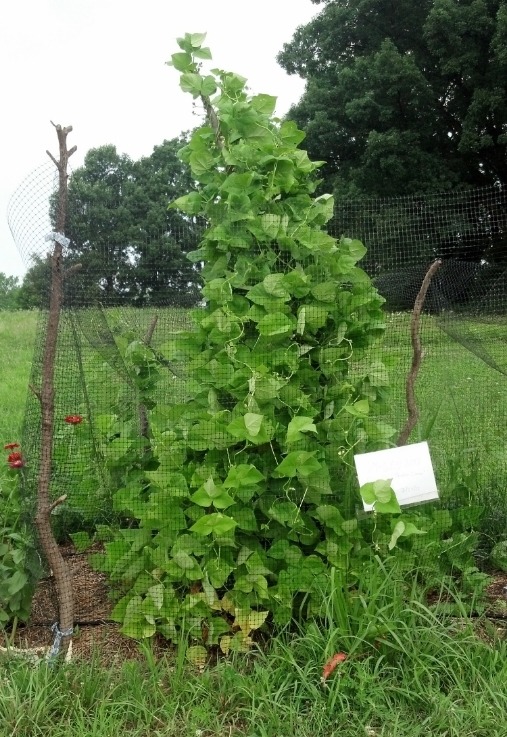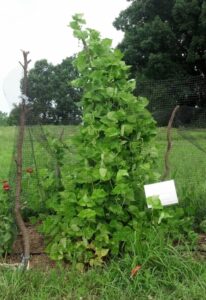Keep Exploring
When you make a purchase from Seed Savers Exchange, you help fulfill our nonprofit mission to protect our food and garden heritage. Do even more good by making a donation to help us preserve and share even more heirloom varieties!

From the Seed Savers Exchange collection, the ‘Brinker Carrier’ bean represents the histories and connections between two families in West Virginia that span several generations.
We at Seed Savers Exchange grow hundreds of plant varieties at Heritage Farm in Northeast Iowa each year, but SSE also distributes varieties to growers around the world through the Member-Grower Evaluation Network, or M-GEN (Now the Community Science ADAPT program) in an effort to build a larger base of information on each variety.
M-GEN/ADAPT participants trial varieties from the seed bank in their own gardens and send us feedback on their performance. This information helps us better understand the adaptability of these varieties to different environments and guides our selection process for new introductions into the Seed Savers Exchange catalog.

In 2013, M-GEN participants compared 4 versatile heirloom beans for use as snap beans, shelling beans, and dry beans. The overall favorite of that group was ‘Brinker Carrier.’ It is a good snap bean, but received especially strong taste reviews as a shelling and dry bean.
Jane Jensen of Utah wrote, “Yummy shelly bean, had the best flavor, white, creamy smooth, delicious.”
Sandra Tipton of Indiana noted, “Delicious bean, great texture, flavor, it will have a permanent spot in my garden.”

The Carrier and Brinker families have lived in upper Mason County, WV for well over a century.
In 2011, Fred Brinker told SSE that he has grown this bean for about 20 years near New Haven, WV. The bean has been passed down in the Brinker family for four generations. The Carriers call the variety “Brinker beans” because the Carriers received the seed from neighbors Elmer and Abby Brinker, Fred’s grandparents.
Elmer and Abby Brinker obtained the seed from Elmer’s parents, Jerome (1843-1905) and Hepzibah (1851-1905) Brinker. Elmer and Abby passed the seed on to their daughter-in-law Alice Brinker (Alice is Fred Brinker’s mom).
After Abby Brinker’s death, the bean was “lost” until the Fremont Carrier family gave it back to Alice Brinker in the late 1950s. Fred Brinker (born 1950) helped his mother Alice raise the bean beginning in about 1958. Alice was born in 1918 and passed away in 2001.
When Fred donated it to SSE in 2006, he named it ‘Brinker Carrier’ to honor the stewardship in both families.
Fred likes the fact that the shelling beans don’t get woody until they become very mature. Sometimes Fred plants two crops, one early and one late, in order to harvest green beans late in the season. His mother would can and freeze the green beans for winter, or the beans would be eaten right from the garden.

This variety is ideal for
This bean can be used as a snap bean for canning and freezing, as a shelling bean, or as a dry bean.
SSE does not currently offer ‘Brinker Carrier’ in our commercial catalog. However, an Exchange user from Wisconsin currently lists this variety on the Exchange, an online gardener-to-gardener seed swap facilitated by SSE. Browse the Exchange.
Beans can be direct seeded into warm soil after the last spring frost. Space your seeds 2-4 inches apart in well fertilized soil. Plant your seeds around 1 inch deep.
If you sow a section or row every two or three weeks, you can get a continuous crop.
As this plant grows it may need support in the form of a trellis to keep the vines off the ground. You won’t need to fertilize this crop in order to get a healthy yield. Learn how to build several types of trellises.
These plants prefer warm weather and soil so they should be grown when temperatures are over 68 degrees F. You should avoid watering them from above as damp leaves may be susceptible to disease.
Learn How to Grow and Save Bean Seeds.
Originally published December 22, 2015. Updated March 29, 2025.
Keep Exploring
When you make a purchase from Seed Savers Exchange, you help fulfill our nonprofit mission to protect our food and garden heritage. Do even more good by making a donation to help us preserve and share even more heirloom varieties!